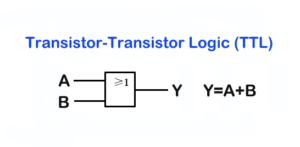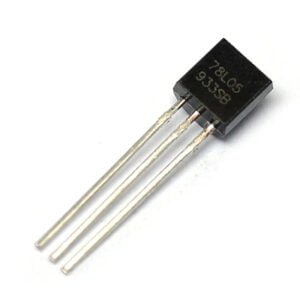High-speed IC boards power today’s tech, from 5G gear to supercomputers. Routing—how signals travel—makes or breaks performance. This post dives into advanced techniques, focusing on signal integrity, design, protocols, and optimization.
Routing's Role in High-Speed IC Boards
High-speed IC boards are fundamental to modern electronics, from smartphones to servers. Routing—the process of creating conductive pathways (copper traces) to connect components—is a critical element in their design.
In high-speed applications, where signals travel at incredibly fast rates, routing is not just about making connections. It’s about ensuring signal integrity. Poorly optimized routing can lead to issues such as signal attenuation (loss of signal strength) and signal distortion (errors in data transmission), which can severely impact system performance.
Therefore, advanced routing techniques are essential for managing signals at high frequencies, minimizing delays, reducing interference (crosstalk), and maximizing system reliability. Mastery of these techniques is crucial for next-generation electronics to meet the demands of higher data rates and smaller form factors.
Signal Integrity in Routing
Signal Integrity (SI) is the core concept that ensures a signal travels along its path on an IC board and arrives at its destination without degradation. At high speeds, this is a major challenge due to several key issues:
Reflection: This occurs when a signal encounters a change in impedance (e.g., from changes in trace width, vias, or improper termination). A portion of the signal energy bounces back, causing voltage spikes that can lead to bit errors.
Crosstalk: This is the unwanted coupling of signals between adjacent traces. The electromagnetic fields of one signal can interfere with a neighboring signal, corrupting data.
Electromagnetic Interference (EMI): External or internal noise can disrupt signals.
A loss of signal integrity can cause a cascade of problems, including reduced data rates, increased error rates, and even system failures. For example, a 10% SI loss on a 100Gbps link can result in over 10,000 errors per second.
To mitigate these issues, engineers use techniques like controlled-impedance traces, ground planes, and specific spacing rules (e.g., keeping a 3x trace width distance between parallel runs).
Good Design for Better Routing
Good circuit board design is the essential foundation for effective high-speed routing. Think of it as creating a well-planned city before building the roads.
The key design elements are summarized in below chart:
| Design Aspect | Role in Routing | Example Best Practice |
|---|---|---|
| Layer Stackup | Reduces EMI; separates power/signal | 8-layer stack: Signal → Ground → Power → Signal |
| Component Placement | Minimizes trace length (reduces delay) | Place high-speed ICs (e.g., FPGAs) near connectors |
| Via Strategy | Avoids signal discontinuity | Use blind/buried vias instead of through-hole |
Poor design (e.g., random component placement) forces longer traces, worsening SI and increasing routing complexity.
Mastering High-Speed IC Routing
Key Techniques
Differential Pair Routing:
This technique uses two closely spaced traces that carry complementary signals. This design is highly resistant to external noise because any interference affects both traces equally and is cancelled out at the receiving end. It’s critical for high-speed interfaces like USB-C, HDMI, and 5G transceivers.
Topology-Based Routing:
This method optimizes signal flow by using different structural layouts. Examples include star, daisychain, and fly-by topologies. Fly-by topology, for instance, is highly effective for memory buses like DDR5 because it helps reduce signal loading.
Multi-layer Routing:
By utilizing multiple signal layers, this technique provides more space for complex connections and allows for the separation of different signal types (data, control, power). This reduces crosstalk and improves signal integrity.
3D Routing:
Used in stacked integrated circuits (SiPs), 3D routing leverages vertical space. It can shorten trace lengths by up to 40% compared to traditional 2D routing, but it significantly increases design complexity.
Main Challenges
- Signal Delay:
In high-speed applications, even a small delay (nanoseconds) can cause timing issues, leading to data errors. Factors like trace length, width, and signal frequency all contribute to delay.
- Signal Integrity Issues:
Improper routing can lead to issues like reflection (due to impedance mismatch), crosstalk (signal coupling between adjacent traces), and EMI (external noise).
- Power Consumption:
High-speed signals require significant power, and routing itself can contribute to power loss through heat dissipation from trace resistance. Minimizing this is crucial for battery-powered devices.
- Design Complexity:
Advanced techniques like 3D routing can drastically improve performance but demand more complex design and manufacturing processes.
Each of these techniques and challenges is a critical consideration for engineers designing high-speed IC boards to ensure optimal performance and reliability.
High-Speed Routing Protocols in ICs
Routing protocols act as the traffic rules for data flow in high-speed IC boards, such as Networks-on-Chip (NoCs) in Systems-on-Chip (SoCs). Choosing the right protocol is essential for optimizing performance and reliability.
Here’re popular options::
| Protocol | Speed | Use Case | Advantage |
|---|---|---|---|
| RIP (Routing Information Protocol) | Up to 100Mbps | Low-complexity ICs | Simple to implement |
| OSPF (Open Shortest Path First) | 1+ Gbps | High-speed SoCs | Dynamic path selection, low latency |
| SRv6 (Segment Routing over IPv6) | 10+ Gbps | 5G core ICs | Scalable, supports network slicing |
Optimizing the Network
Key Optimization Metrics
To evaluate the effectiveness of routing, engineers focus on several key metrics:
Bandwidth Utilization: This measures how effectively the available bandwidth is used. The goal is to achieve 80-90% utilization to ensure high-speed data transfer without overloading the system.
Latency: The time it takes for a signal to travel from source to destination. In real-time applications like autonomous vehicle sensors, a latency of less than 10ns is critical.
Power Efficiency: Reducing power consumption is a significant aspect of optimization. Routing shorter traces minimizes resistance and parasitic capacitance, which in turn reduces power dissipation and the need for complex cooling systems.
Error Rate: A well-optimized system must have an extremely low error rate. This ensures data is transmitted accurately with minimal corruption, which is vital for applications in data centers and high-performance computing.
Achieving Optimization
Achieving these goals requires a strategic approach to routing. Techniques like dynamic routing ensure transmission efficiency by intelligently selecting the least congested paths. Differential pair routing improves reliability by canceling out noise. Cost reduction is also a key factor; by optimizing the number of layers and using efficient routing algorithms, engineers can minimize manufacturing costs without sacrificing performance.
Modern routing is increasingly being driven by advanced technology. Tools that use AI to optimize routes can analyze complex layouts and suggest the most efficient paths, cutting design time by up to 30% while simultaneously improving network performance.
Real-World Applications and Case Studies
5G Communication Equipment
In 5G communication devices, high-speed IC board routing is indispensable. The high bandwidth, low latency, and massive connectivity of 5G networks place extremely high demands on signal transmission speed and stability.
For a 5G base station’s core IC board, for example, a large number of high-speed signal links connect various modules like RF, baseband, and transport. The quality of the routing directly impacts the station’s performance, as these modules need to transfer massive amounts of data in real time. Engineers use advanced topology-based routing to carefully plan signal paths for efficient data transfer. Furthermore, to handle the high frequencies of 5G signals, differential pair routing is widely adopted. This technique effectively resists external interference, ensuring signal integrity during high-speed transmission. As a result, 5G base stations achieve efficient data processing and stable signal transmission. For instance, one brand’s 5G base station saw a 30% increase in data transfer rates and a 20% reduction in latency compared to its predecessor after optimizing high-speed IC board routing, significantly improving network coverage and service quality.
High-Performance Computers
High-performance computers, which are essential for scientific computing, big data processing, and AI training, also rely on advanced high-speed IC board routing. In these systems, multiple processors, memory modules, and storage devices must communicate at very high speeds.
Take a supercomputer’s motherboard, for instance, which is covered with a complex network of signal traces. Since processors need to read and write data to memory and collaborate with other processors rapidly, signal speed and stability are critical. Multi-layer routing is fully utilized in this scenario to separate data, control, and power signals across different layers, which reduces interference and improves reliability. Additionally, dynamic routing is often introduced into high-performance computer designs. When the system load changes, it can adjust signal paths in real time to ensure that data transfer between components remains efficient. For example, in a high-performance computer used for weather simulations, optimizing the IC board routing boosted its processing speed by 15%, allowing for faster data analysis and more accurate forecasts.
Future Trends and Innovations in Routing
AI-Driven Routing
One of the most promising trends is the integration of artificial intelligence (AI) and machine learning (ML) into the routing process. These algorithms can analyze vast amounts of historical design data to predict and prevent signal integrity (SI) issues before they occur. For example, AI-powered tools can consider multiple factors simultaneously, such as power consumption, signal traffic, and material properties, to calculate the most efficient routing configurations in a fraction of the time it would take traditional methods. This technology is already being implemented in platforms like Siemens Xcelerator to streamline the design cycle.
Quantum IC Routing and Novel Materials
As we push into new frontiers like quantum computing, routing faces a new set of challenges. New protocols and techniques will be needed to handle the extreme fragility of quantum signals and ensure they are transmitted without interference. This is being addressed with the development of novel materials. For instance, graphene is being explored for its exceptional electrical conductivity, which could lead to ultra-low-resistance traces that reduce signal attenuation and power consumption. Additionally, self-assembling and new dielectric materials promise to enhance signal integrity and enable higher-frequency operations.
These advancements are not only driving progress in existing technologies but also opening up new possibilities for innovation in fields from consumer electronics to cutting-edge scientific research.
Conclusion
Advanced routing is the backbone of high-speed ICs. Mastering SI, smart design, and dynamic protocols ensures next-gen tech performs. Stay tuned for AI and quantum innovations—they’ll redefine routing as we know it.





